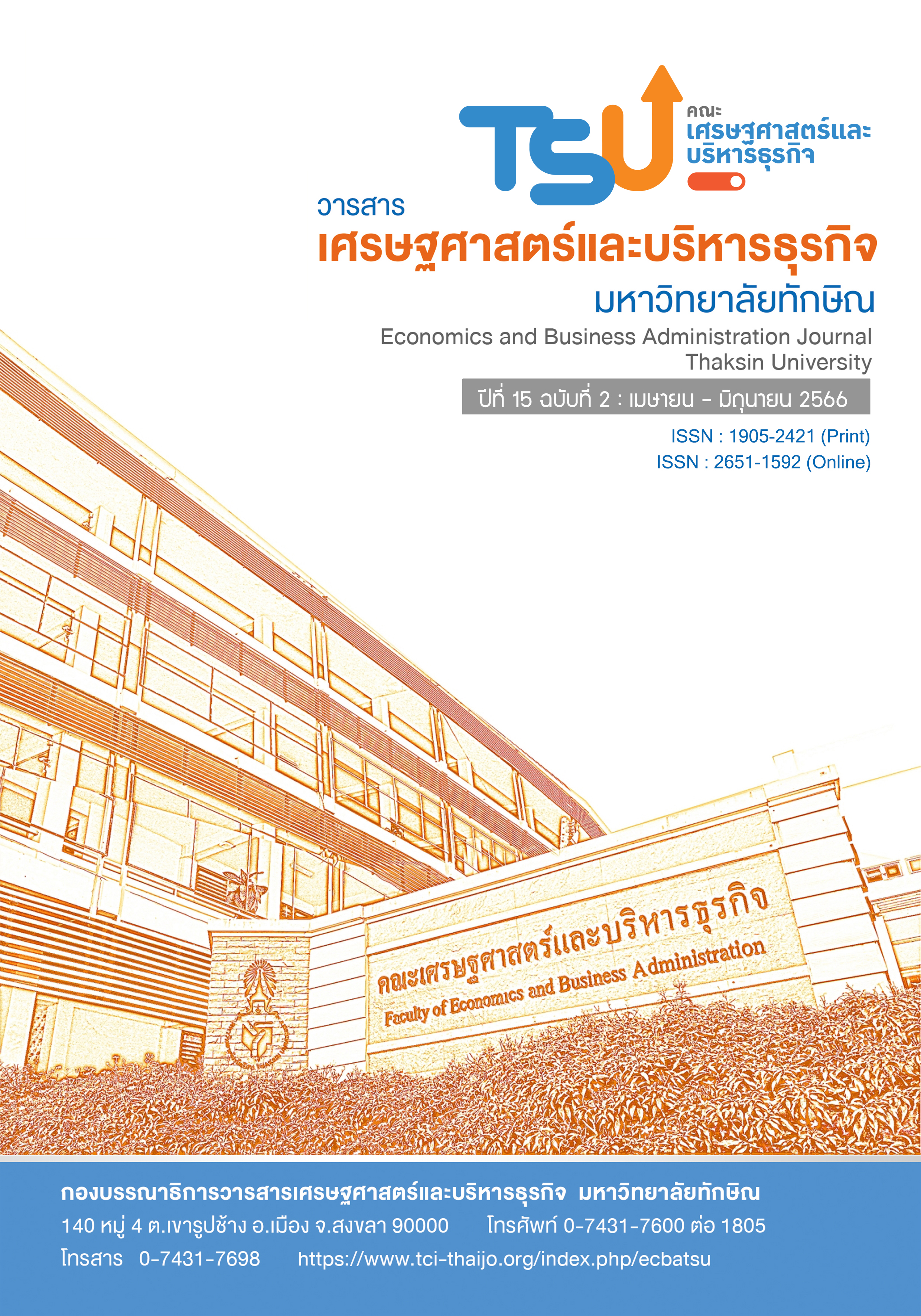Production Cost Analysis for Profit Planning of Cape Gooseberry Products: Group of Kae Noi Royal Project Cooperative Members
DOI:
https://doi.org/10.55164/ecbajournal.v15i2.259625Keywords:
Production Cost Management, Profit Planning, Processed Products, Cape GooseberryAbstract
The aim of this study was to analyze the production costs and profit planning of cape gooseberry products, utilizing qualitative research methods. The researchers collected data using semi-structured interviews from a population and sample group consisting of individuals who met the qualifications of the target group of the Equitable Education Fund (EEF). The researchers employed a quota system determination technique to select 60 participants, followed by the use of random and purposive sampling techniques. Participants were required to provide voluntary information, and methodological triangulation was used to verify the accuracy and reliability of the data, including the use of document data. The results indicated that the production costs per unit for 130 pieces of processed cape gooseberry products were 18.24 Baht, 23.98 Baht, 22.78 Baht, and 21.20 Baht, respectively, for cape gooseberry jam, dried cape gooseberry, cape gooseberry gummy, and cape gooseberry biscuits. The production cost structure varied across the different products, with the product with the highest ratio of direct raw materials being cape gooseberry biscuits, at 43.65%. The highest production costs were 48.94% and 43.22%, respectively. The drying process, which utilized an electric oven and took 20 hours, contributed to the cost structure. Based on the most profitable selling price of 100%, the analysis showed that the products generating the most net profits were dried cape gooseberry, with a profit of 3,120 THB, followed by cape gooseberry gummy at 2,990 THB, cape gooseberry biscuit at 2,730 THB, and cape gooseberry jam at 2,340 THB.
References
Bowsuwan, P., Pokathirakul, P., Charernputh, V., & Chasaengrat, C. (2022). Debt Problems of Thai Agriculturist. Journal of Educational Innovation and Research. 6(1), 265-277.
Center for Continuing Pharmaceutical Education. (2018). Cape Gooseberry...The Royal Project Fruit. Retrieved February 20, 2022, from https://ccpe.pharmacycouncil.org/index.php?option=article_detail&subpage=article_detail&id=236.
Committee on Agriculture and Cooperatives. (2021). Impacts on the Thai Economy from Coronavirus Disease (COVID-19) and Recommendations for Driving the Development of the Agricultural Sector under the National Strategic Plan According to the Situation. Bangkok: Secretariat of the Senate.
Equitable Education Fund. (2021). Community-Based Innovation and Career Development Scholarships Year 2021. Retrieved February 14, 2021, from https://www.eef.or.th/fund/community-base-2564/.
Gimzauskiene, E., & Valanciene, L. (2009). Performance Measurement System in the Context of Economics Changes. Economics & Management. 14(1), 33–42.
Information Center of Knowledge, Local Wisdom and Community Innovation. (2022). Information System for the Management of Community Financial Institutions. Equitable Education Fund: Bangkok.
Kae Noi Royal Project Cooperative. (2020). Annual Report Year 2020. Chiang Mai: Kae Noi Royal Project Cooperative.
Nuidod, S., & Chanprasit, S. (2021). Cost-Benefit Analysis of the Cage Culture of Sea Bass: Case Study of Koh Yo, Mueang Songkhla District, Songkhla
Province. Economics and Business Administration Journal, Thaksin University. 13(1), 163-175.
Pongwiritthon, K., & Syers, S. (2022). The Development of Cultural Landscape Knowledge Management Model with Local Wisdom by Digital Marketing to Promote the Image of the Participation in Community-Based Tourism Products. Economics and Business Administration Journal, Thaksin University. 14(3), 63-83.
Rattanamanee, K., Mannai, P., Satharat, P., & Chindakul, W. (2017). Studying of Cost Calculation for One Tambon One Product of Trang Province. Modern Management Journal. 15(1), 75-84.
Thana-anawat, P. (2020). Production Cost Management and Profit Planning of Community Enterprise Products for Local Economic Advancement, Bang Nangra Subdistrict, Bang Pahan District, Phra Nkhon Si Aytthaya Province. Journal of Kanchanaburi Rajabhat University. 9(1), 47-56.
William, L., Shannon, A., & Michael, M. (2023). Fundamentals of Cost Accounting. (7th Ed.). McGraw Hill.
Downloads
Published
How to Cite
Issue
Section
License
Copyright (c) 2023 Economics and Business Administration Journal Thaksin University

This work is licensed under a Creative Commons Attribution-NonCommercial-NoDerivatives 4.0 International License.




